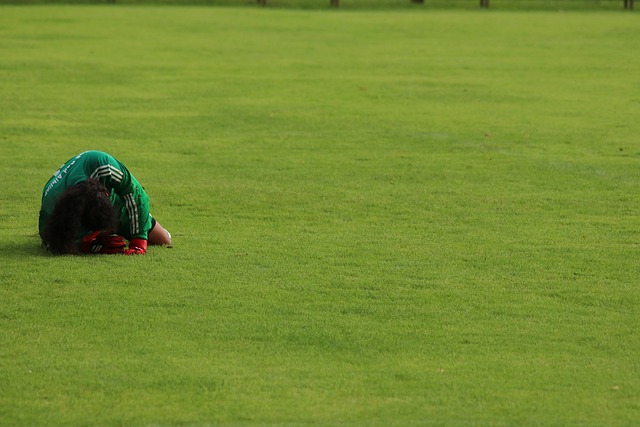PRP therapy for sports injuries uses a patient's blood to create platelet-rich plasma, accelerating healing through growth factors that stimulate bone and tissue regeneration. This minimally invasive treatment aids in managing stress fractures and bone injuries, offering athletes a faster, natural recovery option compared to traditional methods. Backed by research, PRP therapy reduces healing times and minimizes risk of further injury.
“Discover the revolutionary power of PRP therapy in treating stress fractures and accelerating bone healing among athletes. This comprehensive guide explores PRP’s potential as a cutting-edge solution for sports injuries. From understanding the basics of PRP therapy to delving into its science, we examine how it combats the challenges posed by stress fractures. We also detail the step-by-step process and benefits of PRP treatment, offering athletes and professionals alike valuable insights into this game-changing approach to bone healing.”
Understanding PRP Therapy for Sports Injuries
PRP therapy for sports injuries has emerged as a game-changer in the realm of bone and tissue regeneration. It involves the use of a patient’s own blood to create a concentrated solution of platelet-rich plasma (PRP). This powerful treatment option stimulates healing by delivering a high count of growth factors directly to the site of injury, such as stress fractures. These growth factors accelerate the body’s natural repair process, enhancing bone regeneration and tissue restoration.
For athletes suffering from sports injuries, PRP therapy offers a minimally invasive approach with potential for faster recovery times compared to traditional methods. The procedure is straightforward: a small amount of blood is drawn, processed to isolate the PRP, and then injected into the affected area. This innovative treatment has shown promising results in treating various sports-related conditions, making it an appealing option for athletes seeking effective and natural healing solutions for their stress fractures and bone injuries.
How Stress Fractures Affect Athletes
Stress fractures, also known as stress-related bone injuries, are a common concern among athletes and active individuals. These tiny cracks in the bones typically occur due to repetitive stress or excessive training, often characterized by intense physical activities that put consistent pressure on specific bone areas. Athletes participating in high-impact sports like long-distance running, jumping disciplines, or constant changes of direction in soccer and basketball are particularly vulnerable.
When an athlete experiences a stress fracture, it can significantly impact their performance and overall well-being. The pain may be subtle at first but gradually intensifies with continued activity, making it challenging for athletes to maintain their training regimes. Proper management is crucial to prevent further damage and ensure optimal bone healing. Here’s where PRP therapy for sports injuries steps in as a potential game-changer, offering a natural approach to support the body’s healing process.
The Science Behind Platelet-Rich Plasma
Platelet-Rich Plasma (PRP) therapy is a cutting-edge approach in sports medicine, offering a natural and effective way to treat stress fractures and promote bone healing. The science behind PRP therapy involves harnessing the body’s own regenerative capabilities. It starts with drawing a small amount of a patient’s blood, which is then processed in a specialized device to concentrate platelets—the blood cells responsible for clotting and healing. This concentrated plasma, rich in growth factors and bioactive proteins, is injected into the affected area.
These growth factors stimulate stem cells to differentiate into new bone tissue, enhancing the body’s natural healing process. PRP therapy has gained popularity in the treatment of sports injuries due to its minimal invasiveness and promising results. It offers a faster recovery time compared to traditional methods, making it an attractive option for athletes seeking to regain function without extensive downtime.
Healing and Recovery with PRP Treatment
PRP therapy for sports injuries has emerged as a powerful tool in accelerating healing and recovery. It involves using a patient’s own blood to create a rich concentration of platelets, which are known for their role in clotting and containing growth factors essential for tissue repair. These growth factors stimulate angiogenesis—the formation of new blood vessels—and promote the production of collagen, a key component in bone healing. This process not only speeds up recovery but also enhances the strength and integrity of the healed tissue, making it particularly beneficial for stress fractures.
The effectiveness of PRP treatment is supported by various studies that show improved pain relief and reduced healing times compared to traditional methods. Athletes and active individuals often find that PRP therapy allows them to return to their sports or physical activities sooner while minimizing the risk of further injury. This non-invasive approach offers a promising alternative for managing and treating stress fractures, providing patients with a more efficient route to full recovery.
PRP therapy for sports injuries, particularly stress fractures, offers a promising approach to accelerated bone healing. By harnessing the body’s natural regenerative capabilities through platelet-rich plasma, athletes can potentially reduce recovery times and return to competition sooner. The science behind this innovative treatment holds significant potential, with ongoing research continuing to explore its efficacy. For athletes dealing with stress fractures, considering PRP therapy could be a game-changer in their journey towards full recovery and returning to peak performance.
